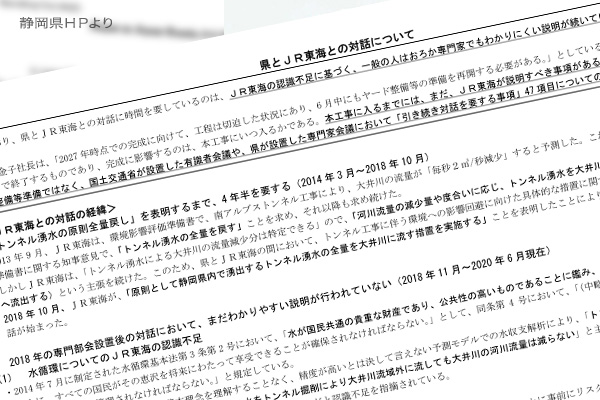At a meeting with Central Japan Railway Co. President Shin Kaneko on June 26, Shizuoka Prefecture Governor Heita Kawakatsu refused to approve the company’s construction work for its planned Linear Chuo Shinkansen maglev railway line for the reason that the work could affect water resources in the prefecture. The refusal has made it difficult for the railway company to complete the super high-speed magnetically levitated train line between Tokyo and Nagoya in 2027 on schedule.
China has recruited some 30 Japanese engineers involved in the Linear Chuo Shinkansen project to develop its own maglev line. It plans the maximum speed for the planned line at more than 600 kilometers per hour (against the fastest record of 603 kph for Japan’s Linear Chuo Shinkansen), according the China Daily, an English newspaper affiliated with the Chinese Communist Party, on November 14, 2019.
China has acquired intellectual property on Japan’s current Shinkansen bullet train technology and marketed the technology in the world, claiming that it has developed the technology on its own. If the Linear Chuo Shinkansen’s completion is delayed due to the refusal by Gov. Kawakatsu, China may commercialize and market the maglev railway technology in the world ahead of Japan, cutting Japan’s relevant international competitiveness. Does Gov. Kawakatsu recognize such possibility?
Maglev technology available for military use
A decline in Japan’s international competitiveness is not the only problem. Super electromagnetics for the maglev train is a dual-use technology available for cheap rapid-fire rail guns and electromagnetic catapults for aircraft carriers to launch aircraft. One of my friends at the U.S. Central Intelligence Agency has cautioned that laser technology for next-generation missile defense methods along with rail guns has been provided to China through Japan-China academic exchanges.
As the first and second aircraft carriers of the Chinese People’s Liberation Army (PLA) Navy use ski-jump ramps for launching aircraft, weapons and fuel aboard carrier-based aircraft are limited. If China uses an electromagnetic catapult adopted for the sophisticated U.S. aircraft carrier Gerald R. Ford, carrier-based aircraft would be armed more heavily to increase threats to forward deployed U.S. Navy and Air Force units as well as the Japanese Self-Defense Forces.
Former Commander Yao Cheng of the PLA Naval Command, who has taken asylum in the United States, testified last year that China stole advanced technologies from developed countries to dramatically improve automobile, aircraft and other industries. He specified super electromagnetic among such stolen technologies.
As Toyota Motor Corp. has announced to create a joint venture with Chinese companies for developing fuel cell vehicles, we should remember that fuel cell technology to be transferred to China could be used for engines for submarines that quietly cruise underwater without surfacing.
Is environmental destruction true reason for refusal?
On tunnel construction in Shizuoka Prefecture for the Linear Chuo Shinkansen project, 11 water user organizations along the Oigawa River, Central Japan Railway Co. and Shizuoka Prefecture reached agreement in September 2017 and an agreed document was being drafted. Gov. Kawakatsu had totally endorsed the Linear Chuo Shinkansen project. He is viewed as seeking some returns to Shizuoka Prefecture for its approval of the construction, rather than being concerned about the environmental problem of a decline in Oigawa River water. Japan’s national interest loss because of his opposition to the Linear Chuo Shinkansen construction, however, would be enormous.
Fumio Ota is a senior fellow and a Planning Committee member at the Japan Institute for National Fundamentals. He is a retired Vice Admiral of Japan’s Maritime Self-Defense Force.


